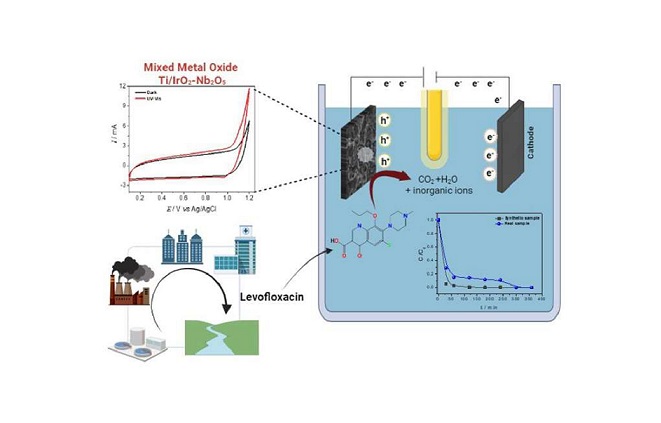


The study obtained excellent results in terms of degrading the drug in simulated and real water samples (image: CDMF)
Published on 03/04/2024
Agência FAPESP* – Levofloxacin is a widely used antibiotic prescribed to treat pneumonia, bacterial rhinosinusitis, bacterial prostatitis, pyelonephritis, urinary tract infections, skin disorders and skin structure infections, among other conditions. The drug is prevalent in aqueous environments owing to its low degradability in wastewater treatment plants and is therefore considered an emerging pollutant.
In light of its high toxicity and possible endocrine-disrupting effects, widespread consumption of levofloxacin makes its impact on the environment particularly harmful. Researchers at several universities and institutions in São Paulo state (Brazil) have joined forces to develop ways of removing it from aqueous environments or converting it to biodegradable by-products with low toxicity.
Funded by FAPESP (projects 14/50945-4 and 17/11986-5), the study obtained excellent results, degrading the antibiotic in simulated and real water samples with the aid of an electrode comprising iridium dioxide and niobium oxide films on a titanium substrate.
The results are described in an article published in the journal Electrochimica Acta.
The films were obtained by the modified Pechini method, and the electrode, after morphological, structural and electrochemical characterization, was used to degrade the antibiotic using different processes, including electrolysis and photoelectrolysis. The material displayed excellent photoelectrocatalytic activity and stability, as well as a large electrochemically active surface area. The results were considered highly satisfactory, with promising prospects for treatment and removal of organic pollutants in water.
The authors of the article include Lucia Helena Mascaro, a professor at the University of São Carlos (UFSCar), co-principal investigator at the Center for Development of Functional Materials (CDMF), and a researcher at the Center for Innovation in New Energies (CINE).
CDMF is a Research, Innovation and Dissemination Center (RIDC) established by FAPESP at UFSCar. CINE is an Engineering Research Center (ERC) supported by FAPESP and Shell.
The article “Effective photoelectrocatalysis of levofloxacin antibiotic with Ti/IrO2_Nb2O5 in environmental samples” is at: www.sciencedirect.com/science/article/abs/pii/S0013468623017577?via%3Dihub.
* With information from CDMF.
Source: https://agencia.fapesp.br/50994